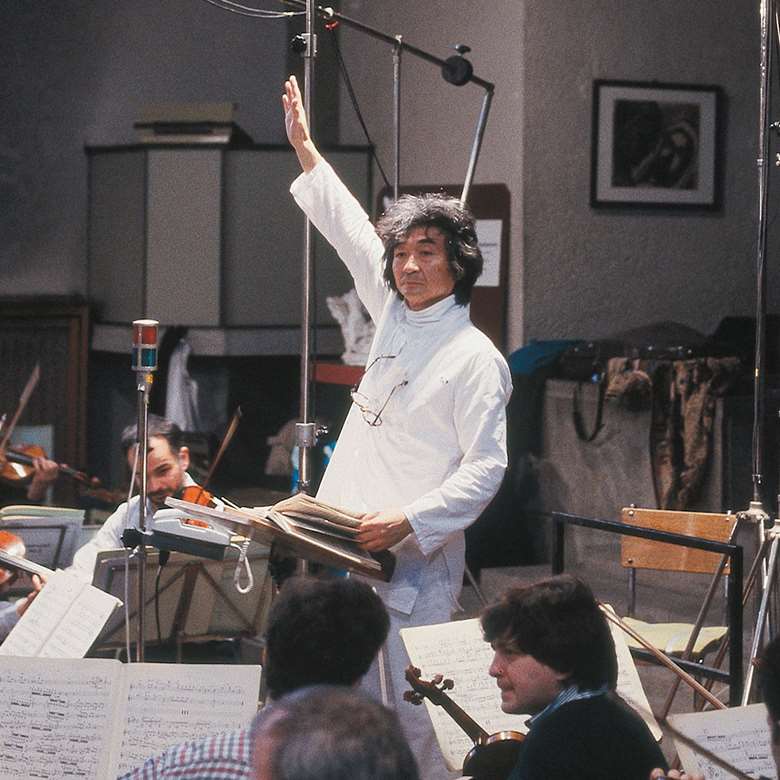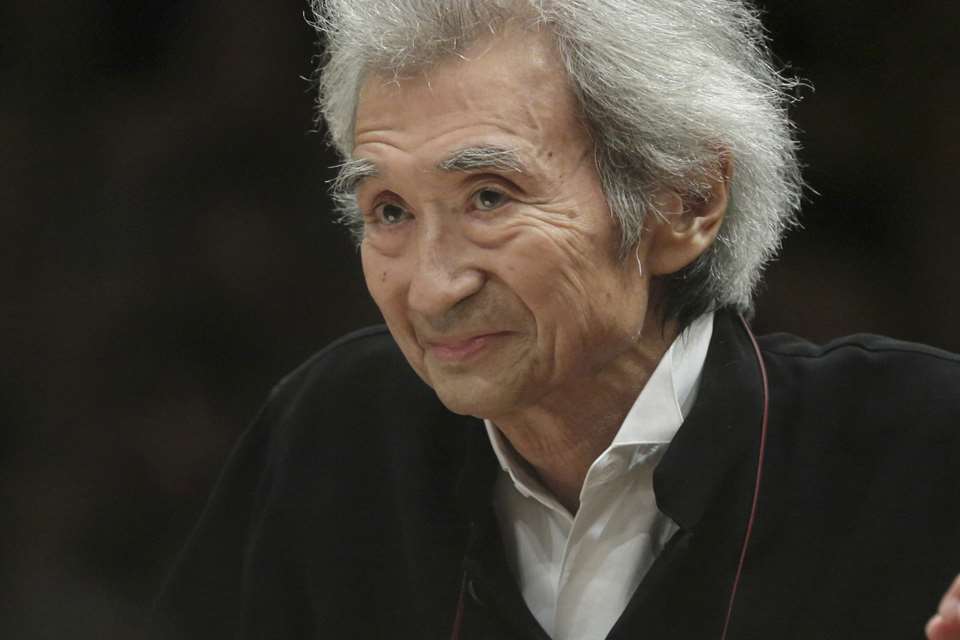Seiji Ozawa remembered
Friday, February 9, 2024
Seiji Ozawa (September 1, 1935 – February 9, 2024)

The great conductor Seiji Ozawa has died at the age of 88. As a tribute we reprint an article by Philip Clark from 2014 reflecting on Ozawa's life and career up to that point.
Seiji Ozawa chalked up his first Gramophone appearance in September 1968 with a warmly received pairing of Messiaen’s Turangalîla-symphonie and Takemitsu’s November Steps; and in a review of Ozawa’s The Rite of Spring with the Chicago Symphony Orchestra, Edward Greenfield, in March 1969, pretty much set the tone for how Ozawa has been assessed in this magazine ever since: ‘I have never known a more balletic performance than this,’ he wrote, ‘balletic in the sense that Ozawa makes the music dance.’
Had Ozawa’s comely podium manner influenced his view on the performance? EG hoped not, but these two aspects of Ozawa’s artistry are anyway impossible to disentangle. My own first impressions of Ozawa were formed by seeing him on film (at Leonard Bernstein’s 70th birthday concert from Tanglewood) and quickly I realised that his podium style was unique – a genuine third way between the mannerisms of his two great mentors, the über-Zen Herbert von Karajan and the making-it-burn Bernstein. Ozawa’s chiselled, wise-owl face really did look like it had been dropped accidentally on to the slender frame of a particularly graceful athlete. His body moved differently to other conductors, and you wondered how his physical presence on the podium changed the perceptions of those around him towards sound.
And yet the sheer brute physicality of Ozawa’s Turangalîla, the Toronto Symphony Orchestra with Yvonne Loriod (piano) and Jeanne Loriod (ondes martenot), belies that off-the-peg image of Ozawa as fragile conductorly porcelain doll. The fifth movement, ‘Joie du Sang des Étoiles’, is turbo-thrusted to the point of kinky delirium; but his fine-spun sixth movement, ‘Jardin du Sommeil d’amour’, does give us an early window into Ozawa’s ear for obsessive detail and softer-than-soft textures.
His actual debut on disc was as one of two assistant conductors (the other was Maurice Peress) on Bernstein’s 1962 New York Philharmonic recording of Charles Ives’s Central Park in the Dark, and by the time he came to record Turangalîla in 1967 his rise and rise had become thankfully unstoppable. Bernstein appointed him as NYPO assistant after word came from Berlin that Karajan had a star pupil; Karajan had heard about this exhilarating new Japanese conductor after Ozawa scooped the highly prestigious Koussevitzky Prize at Tanglewood in 1960.
And Ozawa ended up at Tanglewood through a recommendation from Charles Munch. Not a bad list of guiding figures for a nascent talent who, only 10 years earlier, had been conducting local orchestras in Japan.
Interviewed by the horn player Fergus McWilliam on the Berlin Philharmonic’s Digital Concert Hall, Ozawa speaks about another early inspiration, the Japanese conductor Hideo Saito, with deep love and respect. ‘There was no background or tradition for classical music in Japan until Saito, who studied cello in Germany before the war, and then came back to Japan,’ he says. Also a mouse-click away on YouTube is archival footage of Ozawa interviewing Karajan. Ozawa reminds Karajan of his advice about how to tackle the opening of Brahms’s Second Symphony – ‘Let the flute start and the violins will follow.’ ‘Yes, if it’s already running, don’t disturb it,’ Karajan laughs – a sentiment that could easily stand as Ozawa’s own personal motto.
For a conductor of Ozawa’s standing, though, his discography is unexpectedly patchy. As Music Director of the Boston SO between 1973 and 2002, Ozawa recorded for Telarc – a fine set of Beethoven’s piano concertos with Rudolf Serkin stands out – yet no one dwells on his cycles of Beethoven and Brahms symphonies cut with the Saito Kinen Orchestra during the early 1990s. But it might be a good idea if they did – Ozawa keeps the rhythmic impetus crisp and taut, while the lambent shine he coaxes out of his orchestra beams. Also with the Saito Kinen Orchestra came a clear-as-mountain spring water disc of Bartók’s Concerto for Orchestra and Music for Strings, Percussion and Celeste, reminding us that Ozawa has long relished unpicking what might be described as early- to mid-20th-century tonal-based modernism: Bartók, Stravinsky, Ravel, Debussy and Richard Strauss.
The past few years have been tough as Ozawa continues to battle health problems triggered by a diagnosis of oesophageal cancer in 2010. But the fight-back has started. In June, he led musicians from his Geneva-based International Academy in Bach and Bartók. A chair was discreetly placed on the podium, but reports suggest he danced and gyrated, using his body to shape the music, and the chair went largely unused.
This article originally appeared in the September 2014 issue of Gramophone. Never miss an issue – subscribe today












